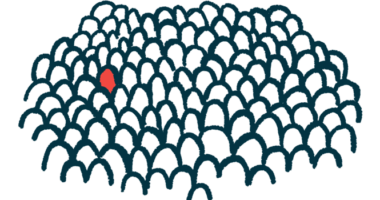Number of attacks, severity is high in HAE patients in Canada
In survey, people with disease report waiting median 10 years to be diagnosed

Hereditary angioedema (HAE) is marked by frequent attacks and high disease burden in Canadian patients, who waited a median of 10 years for a diagnosis after the onset of their symptoms, a recent survey shows.
This reality “indicates an urgent need for increased awareness and education on HAE among Canadian physicians, as well as continued advancements in treatment,” the study’s researchers wrote in “The Disease Burden of Hereditary Angioedema: Insights from a Survey in French-Canadians from Quebec,” which was published in the Journal of Immunology Research.
HAE features sudden and recurrent episodes of swelling that affect the deeper layers of the skin, such as the lips, the skin around the eyes, hands and feet. Swelling may also affect the mucosal linings of the respiratory and digestive tracts.
There are several types of HAE, which vary according to its underlying cause. HAE type 1 and 2 are caused by mutations in the SERPING1 gene and affect either the production or the function of C1-INH, a protein that helps control blood clotting and inflammation. Working C1-INH is within normal range in the more rare HAE type 3, which is caused by mutations in the F12 gene that contains instructions for making coagulation factor 12.
Clinical data of HAE in Canada remain “limited in all types of HAE, particularly in patients with [HAE type 3],” wrote researchers at the Centre Hospitalier Universitaire de Québec, Canada, who surveyed 35 patients (80% women; median age 46) in Quebec to assess the disease characteristics of all three HAE types and their burden. The survey was developed and distributed by the HAE patient organization Angio-oédeme héréditaire du Québec from May 2019 to February 2020.
Types of HAE in Canada and their effects
HAE type 1 was the most common type (46%), followed by type 3 (43%). Only 3% of patients were diagnosed with HAE type 2. Most (74%) were diagnosed by an immunologist or allergist. Women were significantly younger than men at their first symptoms (median, 16 vs. 46 years).
More than two-thirds of patients (69%) reported unnecessary treatments and procedures before their diagnosis, which took a median of 10 years from the onset of symptoms. Median diagnostic delay was 7.5 years for respondents with HAE type 1/2 and 11.5 years for HAE type 3. For most respondents (70%), their last visit to the emergency department was more than a year ago, with nearly half (46%) reporting a wait time of more than an hour before being seen by a doctor.
Before starting their current treatment, 42% of patients had weekly HAE attacks (one to six a week), 46% one to three times a month, and 3% daily attacks. Most attacks affected the abdomen (89%), voice box (66%), feet (66%), hands (63%), and face (63%).
The attacks were reported as severe, meaning “impossible to continue current activities/requires immediate treatment,” by 66% of patients, and as moderate, where there was “a perceived impact on daily activities,” by 31%.
HAE had a detrimental impact on the psychological and emotional well-being of 86% of respondents, and affected the relationship of patients with loved ones in 57% of the cases. In 89% of cases, patients had to give up social activities, and 80% reported a negative impact on their professional life.
The most common medication, previously or currently, was tranexamic acid (46%), which is used off-label to prevent or treat acute swelling attacks. This was followed by plasma-derived C1-INH, administered directly into the bloodstream (40%) or under the skin (37%). Treatments were self-administered by the patients in 91% of cases. Side effects were reported by 44%. The current treatment was reported to lead to a significant reduction in both attack frequency and duration.
Most patients (89%) received long-term preventive treatment and this was associated with a longer period without needing to visit the emergency department. Those with HAE type 3 were more likely to have visited the emergency department in the previous year than those with HAE type 1/2 (40% vs. 6%).
A final analysis focused on the nine HAE type 3 patients on preventive, long-term therapy with tranexamic acid, which was used more often by this group than by HAE type 1/2 patients.
These patients reported lower attack frequency, along with less time having abdominal pain, after treatment. No effects were seen in the duration of swelling in the face and extremities. Side effects were reported by about half the patients and 67% had their last visit to the emergency department more than a year ago.
“This study provides a snapshot of the impact of HAE on the daily lives of Canadian patients,” wrote the researchers, who said “the questionnaire from this study can be used to identify opportunities for improvements in HAE patient care,” particularly with type 3.








